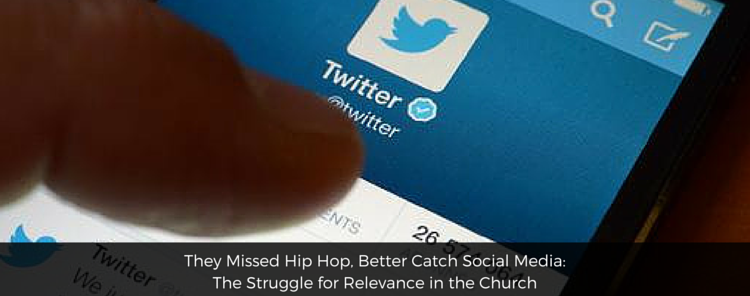
They Missed Hip Hop, Better Catch Social Media: The Struggle for Relevance in the Church
Over 1.1 billion users on Facebook. 500 million on Google+. Billions more on Instagram, Twitter, and Snapchat. Social media is the choice communication of the day. More people communicate via apps and websites than by telephone or email. The most amazing thing about this social media driven world is how many of these social media outlets are younger than 15 years old! This means that a new generation of young people, ages 12-18, were born at the brink of the social media age. Walk into a place where these young people are gathered and one will witness faces submerged in bright tablet screens and smartphones, engaging one another from the countless apps that govern their social consciousness. Even in the company of one another, youth of this generation will be communicating through their social media apps.
The current generation is also of the offspring of the Hip-Hop generation. Hip-Hop’ers find themselves being born or maturating between the years 1982-2000. So what does all of this information mean for the church? It means that if churches are going to live out the commission to reach people, transform lives, and build community, they will have to do it by utilizing social media and hip-hop. The disappointing news is that many of our mainline Christian traditions (Catholic, Anglican, Methodist, Presbyterian, Lutheran, Baptist, Church of Christ, etc.) missed the opportunity to make space for the Hip-Hop’ers within their congregations, and risk an even greater chance to miss the “App Generation”[1] as well.
F. Douglas Powe, Jr., in his book New Wine, New Wineskins[2], illustrates churches have failed to move beyond a 1960’s mindset as it seeks to reach new generations. He suggests that churches must give space for new generations to experience God in ways that complement their life experiences. If churches want to reach this current generation, they must heed the words of Powe. The church failed to give this space to the Hip-Hop’ers. In the late 70’s-early 80’s when Hip-Hop originated as the sound of young people, the church shut the doors, locked the windows, and closed their ears to the vibes of the streets. Just as they had done previously with music of the likes of James Brown and Ray Charles, churches turned “the other cheek” to the happening of the urban culture, committed to their marriage to doctrine over relationship. For the first time in decades, the church began to see its membership decline and its reach shortened as it failed to keep up with the movements that drove the emerging culture.
Over twenty years later and the church has not learned its lesson. To be clear, it is not an indictment against all churches. There are churches that are models for some of the more traditional, ‘set in their ways’ congregations who need to see how it done. Yet as I mentioned above, there are more who are allowing the generations in their midst to find refuge elsewhere because they are ignoring the key components of their lifestyles: social media and music.
If churches and organizations are going to reach this App Generation, they will have to learn the ways of the culture. In his address to the Corinthian church, the writer Paul suggests that he must become all things to all people in order to reach them for the purposes God had entrusted to him (I Corinthians 9:19-23). The opportunity to reach Hip Hop was missed, now their children have emerged just as complex. Will organizations and congregations miss them too, or will they rise to the challenge and recognize the need to create an “app” designed to be relevant for this new generation? Hopefully it will be the latter.
[1] Term coined by Marcus Jones to refer to this current generations born between 1998 to the present. While I understand many of the first social media outlets took form in the early 2000’s, this group has helped redefine how social media is created and utilized.
[2] F. Douglas Powe, Jr. New Wine, New Wineskines: How African American Congregations Can Reach New Generations (Abingdon Press: Nashville), 2012
